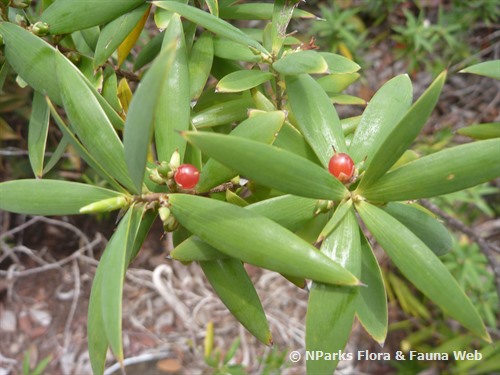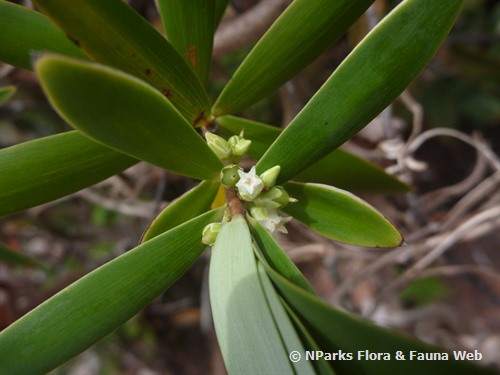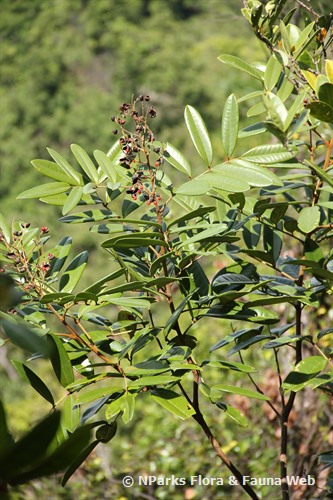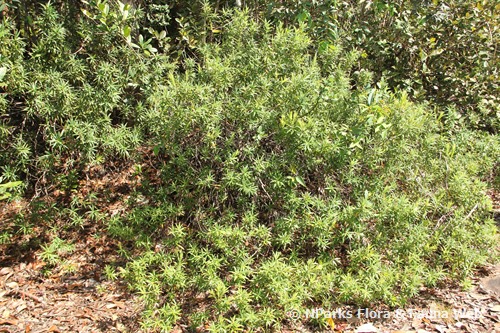
Back
Styphelia malayana (Jack) J.J.Sm.
| Family Name: | Ericaceae |
| Common Name: | Malayan Styphelia, Choreng Atap |
Name
Classifications and Characteristics
| Plant Division | Angiosperms (Flowering Seed Plants) (Dicotyledon) |
|---|---|
| Plant Growth Form | Shrub |
Biogeography
| Native Distribution | Myanmar, Vietnam, Cambodia, Thailand, Peninsular Malaysia, Singapore, Borneo, Sumatra, New Guinea. |
|---|---|
| Native Habitat | Terrestrial |
| Preferred Climate Zone | Tropical |
| Local Conservation Status | Native to Singapore (Presumed Nationally Extinct (NEx)) |
Description and Ethnobotany
| Growth Form | It is a shrub, sometimes a tree up to 5 m tall and sparsely branched. |
|---|---|
| Foliage | Its spirally arranged leaves have leathery leaf blades that are crowded around the twigs, lance-shaped, and not covered with hair, pale green and shiny above, whitish or glaucous and covered with fine hair below, and 3–5 by 0.5–1 cm. |
| Flowers | Its fragrant flowers are bisexual. Its sepals are drop-shaped-oblong to elliptic, not covered with hair, and hardly or not veined dorsally. Its petals are white, sometimes with a pink tinge. |
| Fruit | Its fruits are round, yellow or orange, then shiny red, 4–5 mm across, and produce one seed each. |
| Habitat | It grows on exposed cliffs, rocky shores or sandy beach plains, behind coconut groves by the sea, kerangas associated with Baeckea frutescens, in padang vegetation up to 1800 m, in dry Leptospermum forests and mossy forests of Mt. Kinabalu up to 2745 m. |
| Etymology | Greek Styphelia, hard or solid, the reference to which is unknown; Latin malayana, from Malaya, Malaysia, referring to one locality in the natural distribution of the species. |
| Ethnobotanical Uses | Others: A decoction of leaves and roots is drunk for stomachache and pain all over the body. The fibre (inner bark) is used to make canoes waterproof |
Landscaping Features
| Desirable Plant Features | Fragrant |
|---|---|
| Landscape Uses | Suitable for Roadsides, Parks & Gardens |
Plant Care and Propagation
| Light Preference | Full Sun |
|---|---|
| Water Preference | Moderate Water, Little Water |
Image Repository
Others
| Master ID | 33739 |
|---|---|
| Species ID | 8153 |
| Flora Disclaimer | The information in this website has been compiled from reliable sources, such as reference works on medicinal plants. It is not a substitute for medical advice or treatment and NParks does not purport to provide any medical advice. Readers should always consult his/her physician before using or consuming a plant for medicinal purposes. |



